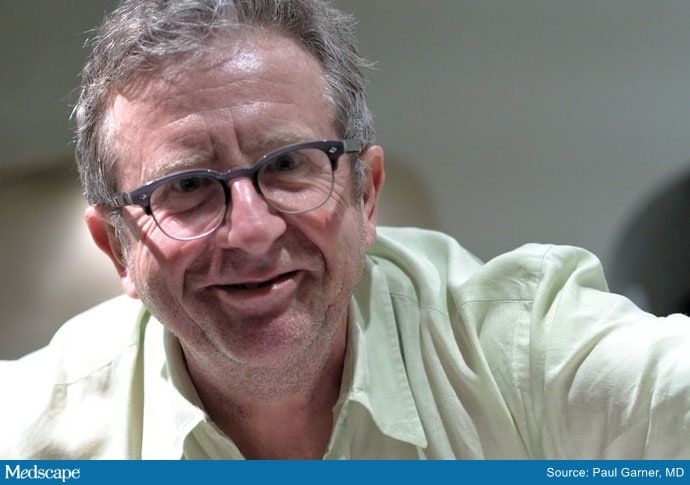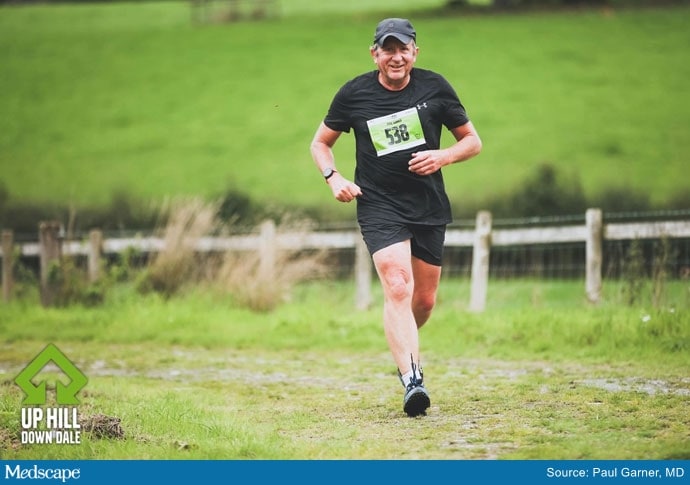Thoughts of getting sick were the furthest thing from Paul Garner’s mind when symptoms of COVID-19 upended his life. “It knocked me sideways,” says Garner, a public health doctor specializing in infectious diseases. He says he never dreamed he would become a high-profile COVID-19 case documenting his struggle for a medical journal and talking about it on television.
Garner assumed he would probably feel ill for a few weeks and then recover. But 8 weeks later, he still felt like he’d been hit with a bat, with aches and pains, twitching muscles, a racing heart, and diarrhea. “It was like being in hell,” he says.
|
|
|
|
He started chronicling his painful illness from COVID in a series of blog posts for the BMJ. In one of his posts, he shared how mortified he was that he might have infected the staff at his workplace of more than 20 years. “I imagined their vulnerable relatives dying and never forgiving myself. My mind was a mess,” he wrote.
Garner couldn’t do most of the things he used to enjoy, and he cut back his work hours at the Liverpool School of Tropical Medicine in the United Kingdom. In the first 6 months of his illness, he wrestled with cycles of feeling better, doing too much, and then crashing again. He found the illness difficult to manage. He tried everything: Using his smartwatch to track his activities, measuring the time he slept, checking whether the foods he ate affected the sudden worsening of symptoms, but nothing worked.
The cyclical illness morphed into weeks of exhaustion when Garner couldn’t even read and had a hard time speaking. At 7 months, he wondered if he would ever recover. “I thought the virus had caused a biomedical change in my body and crippled my metabolism somehow,” he says. “I felt insecure and fearful of the future.”
The change came when someone in his professional network who had recovered from chronic fatigue syndrome offered help. “I learned about how the brain and the body’s stress response to infection can sometimes get disordered,” he explains, “and the symptoms I was experiencing were actually false fatigue alarms.
“These explanations that made sense, along with sensitive coaching to change my beliefs about my illness, really helped.”
He realized there was probably no physical damage to his tissues, so he needed to stop constantly monitoring his symptoms, find diversions when he felt unwell, and look forward to his recovery and getting his life back.
COVID took Garner to the brink and dangled him over a precipice of terrifying unknowns, but he’s found his equilibrium again. “There is life post-COVID. People find their own paths, but they get better. There is hope,” he says.
Life After COVID
Garner is not alone in his coronavirus journey. At least 33 million Americans have been infected with COVID-19, and some still have symptoms more than 4 weeks later, according to the CDC.
A preprint study of half a million people in the U.K., where Garner lives, reports that 1 in 20 people with COVID-19 are dealing with persistent symptoms. Roughly 6% of the people in the study — which has not yet been peer-reviewed — said their recovery was delayed by at least one symptom that persisted for 12 weeks or more.
Breathlessness and fatigue are among the most common issues reported after COVID-19. Even people who do not have any symptoms when they are first infected can feel unwell after the fact.
Congress is providing $1.15 billion to the National Institutes of Health (NIH) to fund research into symptoms that persist after COVID-19.
“Given the number of individuals of all ages who have been or will be infected, the public health impact could be profound,” NIH Director Francis Collins, MD, said in a statement when the funding was announced in February. “Our hearts go out to individuals and families who have not only gone through the difficult experience of acute COVID-19, but now find themselves still struggling with lingering and debilitating symptoms.”
A wide range of physical and mental health consequences are related to long-haul COVID-19, according to the CDC, and people are reporting different combinations of many symptoms.
| Possible Symptoms After COVID Infection |
|
• Tiredness or fatigue • A hard time thinking or concentrating • Headache • Loss of smell or taste • Dizziness on standing • Fast-beating or pounding heart • Chest pain • A hard time breathing or shortness of breath • Coughing • Joint or muscle pain • Depression or anxiety • Fever • Worsening of symptoms after physical or mental activities |
Although most people infected with COVID-19 are never hospitalized, many have life-threatening symptoms and traumatic events without any health care support.
COVID-19 disproportionately affects communities of color, and it stands to reason that will be the case for post-COVID conditions as well, says Sabrina Assoumou, MD, of the Boston University School of Medicine.
It will be crucial to address health care disparities as post-COVID cases mount. Diversification of the workforce will be vital, she explains, because diagnoses can depend on how well a doctor listens to patients describe their symptoms.
The persistent symptoms can be vague, Assoumou says, and some people who never received a diagnosis, for whatever reason, are now having post-COVID effects.
“Long COVID will force us to go back to the basics, like really listening,” she says. “We’re definitely going to need to be more empathetic.”
Why Is This Happening?
Scientists are studying the many people who continue to have symptoms or develop new ones after infection. They are looking for the cause of prolonged illness, trying to understand why some people are more vulnerable to long COVID than others, and assessing whether COVID-19 triggers changes in the body that increase the risk for other conditions, such as heart or brain disorders.
The best defense is to get vaccinated and not get COVID-19, according to the CDC. But when people report illness that persists, doctors are being asked to consider measures of well-being beyond objective lab findings and to focus treatment on specific symptoms.
COVID rehabilitation clinics are opening at medical centers across the United States. But will efforts to help be obstructed by the lack of a clear explanation for symptoms that won’t go away? And will people feel disbelieved by a health system that’s not ready to address something it cannot really measure?
Early indications suggest this is the case, according to Greg Vanichkachorn, MD, a family doctor and founder of the COVID-19 Activity Rehabilitation Program at the Mayo Clinic in Rochester, Minnesota.
“If there’s one universal truth amongst all the patients I’ve interviewed, it’s that they’re often brushed aside, pigeonholed, or, frankly, abandoned,” he says.
Some experts believe doctors should screen patients for mental health symptoms after the initial phase of COVID and offer early and ongoing care.
Early mental health help with therapy could play “an important role,” says Mauricio Castaldelli-Maia, MD, of the Department of Epidemiology at the Columbia University Mailman School of Public Health in New York City.
“It’s important we acknowledge the symptoms are real, imagined, or the result of stress,” Garner says. “And too much rumination on the illness and constant searching for a biomedical cause can be detrimental.
|
|
|
|
“Fear that I would not recover was a huge barrier to dealing with the symptoms. Conversations with others about their symptoms also simply reminds you of them and can reinforce an identity as a sick person. Just let go. Find good things in life — positive thoughts really helped me — but it takes time, there can be setbacks. It is not easy.”
Garner says he found his way forward by listening to others who had recovered.
“I couldn’t do this alone,” he says. “I had lots of friends, people who had recovered from fatigue syndromes and viral infections and help from professional colleagues.”
Garner dusted off his bicycle and started cycling around his favorite parks in Liverpool. And now, he’s running again and is leaving COVID behind.
Source: Read Full Article

